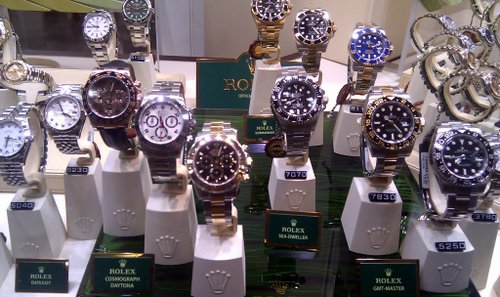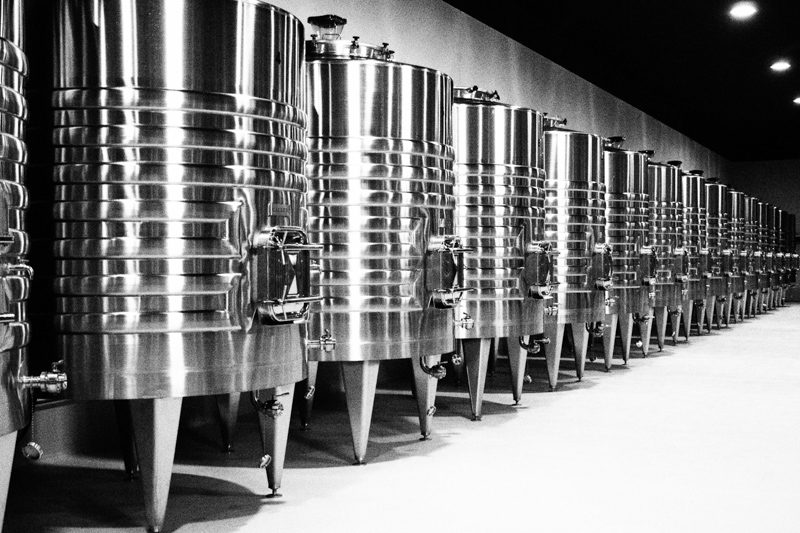Let’s talk about the pricing of top Bordeaux wines.
It’s the subject of intense current discussion, but I think there’s some misunderstanding here. We’re not just talking about the price of wine. At the high end, it’s rather more than this: it’s a discussion about sex.
High-end fine wines are an example of a Veblen good. Named after Thorstein Veblen, who coined the term ‘conspicuous consumption’ in 1899, Veblen goods are unusual in that their appeal lessens as their price drops.
Putting this the other way round, they are the sorts of goods for which high price is part of their appeal, and as they get more expensive, so they become more desirable.
Latour, Lafite, Margaux, Petrus, Haut Brion and Cheval Blanc are celebrity wines. Their market price doesn’t depend on high critic ratings, or even their intrinsic quality as wines. For sure, they need to be very good wines, but as long as they don’t let it slip too much, they will have a steady stream of well-heeled buyers waiting to lap them up. This is because they are an accepted part of the luxury category: famous wines bought, in part, as a display of wealth and status.
Luxury is big business, and doing well at the moment. Luxury is conspicuous consumption. And conspicuous consumption is actually all about sex. It’s a fundamental human behaviour: a sexual display. It is about being able to demonstrate reproductive potential by showing off that you have resources to waste.
Take the example of an expensive watch. Just today I saw a shop window full of Rolex and Breitling watches in the £5000–£7000 range. What drives people to buy one of these watches? I’m sure they are very good, but you can get a perfectly good, beautiful-looking watch for £100 or less—one that tells the time just as well as a watch costing 50 times as much. Why do people feel the need to spend £5000 on a watch? Isn’t this a misallocation of resources?
Or take the example of a Ferrari or Aston Martin. Fine pieces of engineering, for sure. But actually quite impractical for urban roads, and expensive to run. When people buy cars like these, it matters that they are expensive. People aren’t looking for value for money, or practicality.
Both wearing a Rolex and driving a Ferrari are examples of conspicuous consumption. They are resources spent for no logical reason other than to display status. Clearly only someone with lots of money will be able to buy them. They can’t be faked in any plausible way—the only people who could get away with a fake Rolex are the ones who could actually afford one in the first place.
In nature we see the process of sexual selection, whereby some species develop traits that are reliable indicators of reproductive success. The peacock’s tail is a brilliant indicator of what is known as ‘runaway’ sexual selection. A large tail is a significant handicap in terms of escaping from predators, so only the fittest males can get away with the added burden of a big tail. The bigger the tail the fitter the individual. Suddenly there is an evolutionary pressure for the size of the tail to increase. The males display their tails to females. They are costly; a waste of resources. But any male fit enough to waste resources this way will make a good mate. And for a trait to be a focus of sexual selection, it is important that it cannot be faked.
Veblen goods—those that are involved in conspicuous consumption—are basically all about sex. By owning of consuming them, people are displaying the extent of their resources. Rather than a physical trait subject to sexual selection, humans have used this behavioural form of sexual selection. The display of resources represented by the luxury category is basically all about sex.
Latour, Lafite and their peers are not like normal wines, and we have to remember this in discussion about their pricing.
19 Comments on Bordeaux pricing is actually all about sex


Excellent blog note Jamie.
The ‘game’ of Bordeaux pricing is a weird art. I like your association with the size and weight of peacock tail feathers!!
Cheers Jamie,
A Great analogy right there, keep up the good work !
Bests,
DSC.
Brilliant post Jamie. Are you saying Mouton doesn’t qualify? Something to do with sheep not being sexy?
Tell that to the Auckland teams of the 70’s and 80’S Ben and they’ll raise an eyebrow to you :).
We have for a while now known that the 1st growths are tucked firmly in the luxury goods item section of life, where people pull the corks to show how wealthy they are as opposed to how passionate they are about the wine. However this does not account also for the vulgar pricing of the Super Seconds or indeed the second wines of the 1st growths. I remember this time last year popping open my last half bottle of Carruades Lafite 97 after saying good buy to the other half of the case to a London Merchant. Enjoying it thoroughly in the restaurant, but at the same time thinking (as a half) a £25 bottle of wine. Not the £150 + VAT it was going to end up as.
Shame really and the main reason why Claret is perceived as a dirty word amongst those that care about wine. Shouldn’t really be the case it has every right to stand proudly beside Rhone and Burgundy as producing some of the best value wines of France.
Excellent blog post! This is SO true!
I drive a 7 year old Mondeo Estate and have an old (not antique) Accurist watch. I guess that puts me pretty low down the reproductive order, but my wife says she loves me!
As always a pleasure to read, thanks JG.
I agree with the headline premise wholeheartedly. BUT, I take issue with a couple of the comparisons…
I completely understand the mindset of those buying Aston Martins – myself I have my long-sighted eye on an old DB4 – but I don’t think it is always as sexually-driven (no pun intended) as you imply above. For me, there’s a romance about the passion required to conceive, craft and maintain a machine so superlatively fast and beautiful as an Aston Martin. The excitement comes from that shared romance, not from what the car will do for my reproductive potential.
I find that same passion in wine. Being in the trade allows me to witness that passion first hand, through the winemakers themselves, so I don’t need to compensate for ignorance with the Veblen effect. I regularly experience that thrill and spine-tingle even in wines pitched at the £15-£20 bracket.
Were I a mechanic, I suppose I might realise how over-priced Aston Martins are, and opt for something more mechanically interesting…like a Caterham 7 or a Citroen DS – the automobile equivalent of the Mas du Daumas Gassac or (more fittingly for the Citroen) a well-made, well-aged Chateau Chalon. That said, however, given infinite resources, I’d also order myself a DB9-S with built-in Petrus dispenser to drive on the weekends just for the hell of it. During the week, I’d return, grinning, to my Chateau Citroen, content in the knowledge that an inflated bank balance played almost no part in its acquisition. Vive l’originalite!
I drank the koolaide from the California Cult Wine people, and have become addicted. I can’t say no to the exclusive offers from the wine club private mailing lists. I’m buying wine I will never drink, just to show it off in my private wine cellar. I need to go “cold turkey” and fold my cards from this expensive game.
Bottoms up.
Dids, the Super Seconds are luxury goods as much as the Firsts. Le Pin is unclassified and it is a rich person’s cartoon-of-a-wine as much as it is something to be drunk at table with friends.
I say let the stinking rich waste their money. No bottle of wine is worth more than $100.
Fantastic blog!
I am not defending these people who have pushed up the prices of these wines, but we can’t accuse them of misallocation of resources….it is just that they have lots of resources. They could be spending the same % on cars, watches and wines as mere mortals do.
Let’s remember it’s ONLY A DRINK – but of course that’s the whole point of Jamie’s article – top Bordeaux has now almost lost it’s most fundamemtal quality of being ” a great drink” – it’s now a luxury / prestige / collectible / desirable trophy – that changes everything (obviously).
Of course, and all this marketing makes it just so complex as a consumer to find a special bottle – something that is good but not too expensive and hits the notes that both you and your friends enjoy. And then you do. And then the next vintage it’s not that special bottle anymore and despite having 2 cases stashed away (because you know how it goes) you still run out really quickly and then there’s no more or worse, they’re really expensive all of a sudden. And then you start your search all over again. It’s exhausting!
The human race makes me sad sometimes.
Although First Growths are in fact Veblen goods (and their ownership and consumption do convey a “sociobiological” reproductive advantage), they are also investment vehicles that respond to basic economic laws of supply and demand.
Not coincidentally, since the early seventies, when the US abandoned the gold standard, money supply has exploded (in the western economies), while the supply of investment grade wines (IGW) has not changed significantly.
Given that investment vehicles are a “reserve of value”, the observed inflationary process (i.e., real monetary expansion) also seems a good explanation for the steady uptrend in IGW prices in the last decades.
It’s surely summed up in that famous quote from the Chief Executive of Rolex who, when asked about watches, replied “I wouldn’t know. I’m not in the watch business. I’m in the luxury business.”
The Sediment Blog
Apart from the obvious fact that Sauternes is so much sexier than red Bordeaux this is spot on! I knew a woman once who habitually looked at a man’s shoes and based her decisions on whether to sleep with them or not on the quality of their brogues!
Hats off to the people who truly appreciate great wines (and perhaps only have a chance to try them once or twice in their lives), shame on those who treat them as trophies or symbols of power, wealth or status, squandering them on a weekly basis. Such is life; wealth invites arrogance, contempt and flippancy – it makes me sick.
Enjoyed reading your article – very interesting!
In fact, research has shown that we humans are wired that way – if the same wine served in two glasses, the one you’re told one is more expensive triggers more feelings of enjoyment in an MRI. And going back to your article, perhaps we’re wired that way because of evolution which has connected higher status to more pleasure.
It’s the best time to make a few plans for the future and it
is time to be happy. I have read this post and if I may I wish to
recommend you some interesting things or advice. Maybe you could write subsequent
articles relating to this article. I want to read even more
things about it!